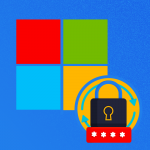The current section is dedicated to the Microsoft SQL Server. It is one of the most popular relational database management systems in the world.
Databases are the foundation of the absolute majority of modern applications, and relational databases are the most common among them. SQL Server allows the users to store and handle the data and build various applications on this background.
This section is meant for beginners. The materials presented here will provide you with the necessary knowledge to master the basics of SQL Server independently. You will learn how to create and manage the databases on SQL Server, request and manipulate the information in databases, and ensure their safe and smooth performance.
The practical guidelines and examples will help you get the most of the information and develop your own understanding and strong skills to work with SQL Server.
1
Introduction to SQL Server
This section explains the basic concepts of SQL Server. The readers will learn about the essence of the SQL Server RDBMS and its distinctive features. The informational part will also provide materials about the SQL Server databases and their elements and operations necessary to create and manage databases. A collection of practical tutorials with exercises will help the readers master the SQL Server basics quickly and efficiently.
2
What is SQL Server?
The section explores the SQL Server as software for working with relational databases. It explains how SQL Server differs from other database management systems and which purposes it is used for. Also, the section briefly describes the methods of operating SQL Server to manage the databases and manipulate the data in them.
3
SQL Server Architecture
This section explains the type of SQL Server architecture and its components. The provided materials expose such modules as a Protocol layer, Relational engine, and Storage Engines along with their components. Practical examples provided in the section will help you get an in-depth understanding of those components.
4
SQL Server Download and Installation
The section clarifies the processes of downloading and installing SQL Server. In particular, it will describe the actual editions of SQL Server and their functional differences. It also provides technical requirements to the environment where you are going to run SQL Server. Finally, you will find step-by-step tutorials on installing and the initial configuration of the software.
5
SQL Server Management Studio — MS SSMS Download & Install
The section describes the SQL Server Management Studio (SSMS), a dedicated solution for managing SQL infrastructures. The software allows for doing all the necessary tasks related to SQL databases using convenient tools. Users will also learn about the specificity of downloading and installing SSMS and the technical requirements for running it.
6
Login to the SQL Server
This section explains the initial configurations to access the SQL Server and its databases. In this material, readers will learn about the types of logins and their restrictions. Also, the section describes the processes of creating, editing, and deleting SQL Server logins through different methods.
7
Connect to the SQL Server
The informational chapter is dedicated to the step-by-step process of connecting to SQL Server. It presents illustrations and detailed information about configuring the connection and firewall rules. The section also provides the list of possible errors and failures during connection and methods of troubleshooting and fixing them.
8
Local DB Download & Install
This section explains LocalDB, that is a feature one can select when installing the SQL Server Express edition. Users will learn about the specificity of this feature and its restrictions. The materials will present guidelines on downloading and installing LocalDB to apply it further to the database tasks.
9
How to Create a New Database in SQL Server
The section explains the process of creating new databases on SQL Server. It provides detailed illustrated guidelines on creating databases either in a visual mode using SSMS or through T-SQL scripts. Users will get many practical examples to reproduce them and create new databases themselves.
10
How to Backup Database in SQL Server
This section provides detailed information about database backups in SQL Server. In particular, it deals with types of database backups, their specific features, and purposes. Also, the section consists of instructions on backing up databases according to different models, one-time or regularly and automatedly. Readers will master different approaches to try them in practice.
11
How to Create Table in SQL Server
The section deals with creating new tables in SQL Server. It clarifies such fundamental tasks as naming the table, defining the table columns, and specifying column data types. The guidelines explain the syntax used to create tables by examples. Also, readers will find information about verifying results and troubleshooting failures in practice.
12
SQL Query (Statement) Syntax
The section describes the types of data possible to use with SQL Server and their categories. Users will learn how to specify the standard data type or introduce the user’s own types via T-SQL. The learning materials cover definite issues of using different data types in expressions, possible errors, and solutions.
Last modified: December 15, 2022





